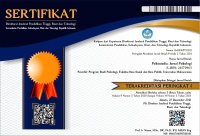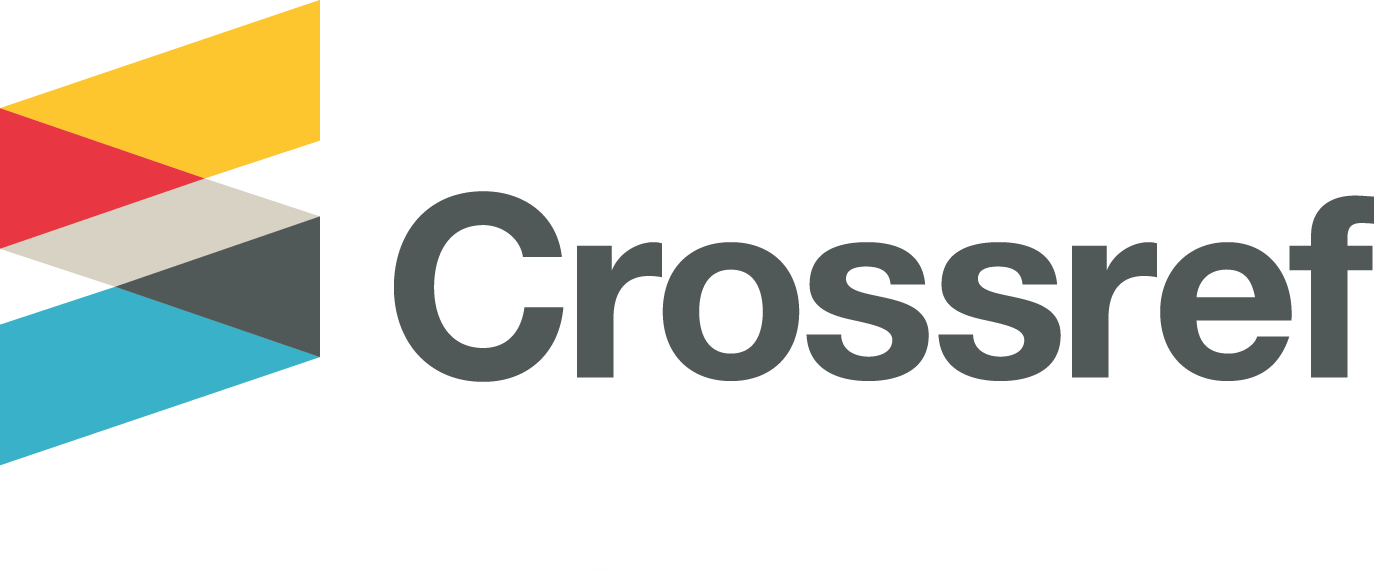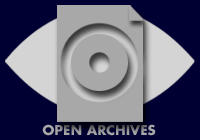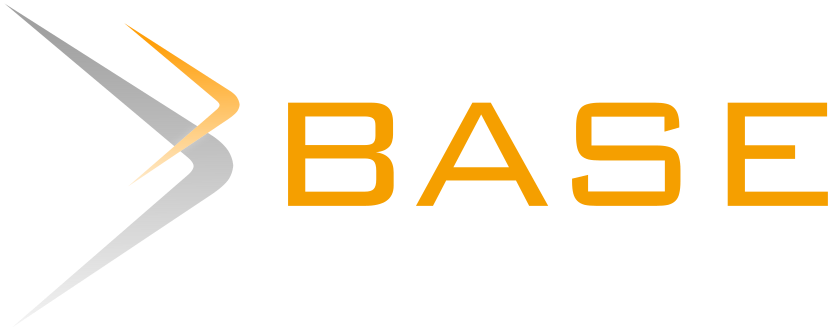9 Box Model Talent Management: Potential Review Assessment on Bank Employees
Abstract
Potential review individual assessment research is carried out as a form of talent management activity to obtain a comprehensive picture of the subject's potential and what competencies that still need to be developed. The tool used to determine potential competencies and their current and long-term contribution to the organization is the 9-box model. The subjects in this study were 1 person who was an employee at PT Bank X. The subject had just served as a Corporate Culture Supervisor. This study used two data collection methods, the test method (psychological test kits and work samples) and non-test (interview). Data were analyzed using descriptive analysis and qualitative analysis. The results of the study show that in the 9-box model analysis, the subject is included in the "future star" category, which is in the range of moderate performers and high potential in the talent pool of PT Bank X. This proves that the subject is a potential cadre to occupy the position of Corporate Culture Supervisor at PT Bank X.
Penelitian asesmen individu potential review dilakukan sebagai bentuk kegiatan talent management untuk memperoleh gambaran secara komprehensif mengenai potensi yang dimiliki oleh subjek serta kompetensi apa yang masih perlu untuk dikembangkan. Tools yang digunakan untuk menentukan potensi kompetensi dan kontribusi mereka saat ini dan jangka panjang bagi organisasi adalah 9-box model. Subjek pada penelitian ini sebanyak 1 orang yang merupakan karyawan pada PT Bank X. Subjek baru saja menjabat sebagai Penyelia Corporate Culture. Penelitian ini menggunakan dua metode pengumpulan data, yaitu metode tes (alat tes psikologi dan work sample) dan non tes (wawancara). Data dianalisis dengan menggunakan analisis deskriptif dan analisis kualitatif. Hasil penelitian menunjukkan bahwa dalam analisis 9-box model, subjek termasuk dalam kategori “future star”, yang berada pada rentang moderate performer dan high potential dalam talent pool PT Bank X. Hal tersebut membuktikan bahwa subjek termasuk kader potensial untuk menduduki jabatan Penyelia Corporate Culture pada PT Bank X.
Keywords
Full Text:
FULL TEXTReferences
Abisapta. (2019). 9 Box Model, Kriteria Penilaian Kinerja Karyawan Guna Pengembangan Potensi. TUW Knowledge. https://tuw.co.id/artikel/index.php/2019/03/01/mengenal-kriteria-penilaian-kinerja-karyawan-dengan-model-9-box-matrix/
Al Ariss, A., Cascio, W. F., & Paauwe, J. (2014). Talent management: Current Theories and Future Research Directions. Journal of World Business, 49(2), 173–179. https://doi.org/10.1016/j.jwb.2013.11.001
Ardhi, D. R., & Darusmin, D. F. (2020). Asesmen Potential Review pada Karyawan Rumah Sakit XX dalam Pengembangan Sumber Daya Manusia. Psychopolytan, 4(1), 27–38.
Armstrong, M., & Taylor, S. (2014). Armstrong’s Handbook of Human Resource Management Practice. Ashford Colour Press Ltd.
Baehr, M. E. (1987). A Review Of Employee Evaluation Procedures and Descriptions of “High Potential” Executives and Professionals. Journal of Business and Psychology, 1(3), 172–202.
Carless, S. A. (2005). Person–Job Fit Versus Person–Organization Fit as Predictors of Organizational Attraction and Job Acceptance Intentions: A Longitudinal Study. Journal of Occupational and Organizational Psychology, 78, 411–429. https://doi.org/10.1348/096317905X25995
Caruso, K. (2012). Development at The Top - Use The 9 Box to Develop Talent in Succession Planning. Via People Insight. https://web.viapeople.com
Collings, D. G., & Mellahi, K. (2009). Strategic Talent Management: A Review and Research Agenda. Human Resource Management Review, 19(4), 304–313. https://doi.org/10.1016/j.hrmr.2009.04.001
Cummings, T. G., & Worley, C. G. (2015). Organization Development & Change. Cengage Learning.
Dias, M. de O., & Aylmer, R. (2019). Behavioral Event Interview: Sound Method for Indepth Interviews. Oman Chapter of Arabian Journal of Business and Management Review, 8(1), 1–6. https://doi.org/10.12816/0052846
Ford, J., Harding, N., & Stoyanova, D. (2010). Talent Management and Development: An Overview of Current Theory and Practice. In Centre for Managerial Excellence (Issue September). Bradford University School of Management. www.bradford.ac.uk/management
Gallardo-Gallardo, E. (2019). The Meaning of Talent in The World of Work. In Global Talent Management Second Edition (pp. 33–58). Routledge.
Gallardo-Gallardo, E., Dries, N., & González-Cruz, T. F. (2013). What is The Meaning of “Talent” in The World of Work? Human Resource Management Review, 23(4), 290–300. https://doi.org/10.1016/j.hrmr.2013.05.002
Hays, D. G. (2013). Assessment in Counseling: A Guide to The Use of Psychological Assessment Procedures, 5th Ed. American Counseling Association.
Indriani, N., Sakethi, D., & Syarif, A. (2020). Pengembangan Simulasi “Stress Test” Menggunakan Tes Kraepelin pada Tes Psikologi. Jurnal Pepadun, 1(1), 63–71.
Khairani, D. A., & Fahmie, A. (2018). Potential Review Karyawan Hotel X Sebagai Dasar Pengembangan Sumber Daya Manusia. Prosiding: The National Conferences Management and Business (NCMAB) 2018, 394–404.
Lee, G. J. (2018). Talent Measurement: A Holistic Model and Routes Forward. SA Journal of Human Resource Management, 16(0), 1–11. https://doi.org/10.4102/sajhrm.v16i0.990
Martin, A. (2015). Talent Management: Preparing a “Ready” Agile Workforce. International Journal of Pediatrics and Adolescent Medicine, 2(3–4), 112–116. https://doi.org/10.1016/j.ijpam.2015.10.002
McCarthy, D. (2018). How to Use The Nine-Box Matrix for Succession Planning and Development. The Balance Carrers. http://www.thebalancecareers.com
McCarthy, D. (2019). The Nine-Box Matrix for Succession Planning and Development. The Balance Carrers. http://www.thebalancecareers.com
Moeheriono. (2014). Pengukuran Kinerja Berbasis Kompetensi: Edisi Revisi. Rajawali Press.
Nurochim, A. D., Wardani, A. A., & Putri, A. R. (2022). Pembentukan dan Perkembangan Alat Tes DISC: Sebuah Literature Review. Jural Flourishing, 2(1), 59–63. https://doi.org/10.17977/10.17977/um070v2i12022p59-63
Oktaria, D., Oktafany, & Lisiswanti, R. (2017). Situational Judgement Test (SJT): Alternatif Metode Seleksi Mahasiswa Baru di Fakultas Kedokteran. JK Unila, 1(3), 598–602.
Peng, Y., & Mao, C. (2015). The Impact of Person – Job Fit on Job Satisfaction: The Mediator Role of Self Efficacy. Springer Science and Business Media, 805–813. https://doi.org/10.1007/s11205-014-0659-x
Prien, E., Schippmann, J., & Prien, K. (2003). Individual Assessment As Practiced in Industry and Consulting. Lawrence Erlbaum Associates.
Putri, V. S., & Batubara, M. (2022). Work Engagement Petugas Laboratorium Kesehatan. Psikostudia, 11(4), 612–622.
Ruddy, T., & Anand, P. (2010). Managing Talent in Global Organizations. In Strategy-Driven Talent Management: A Leadership Imperative (pp. 549–594). Jossey-Bass.
Sinambela, L. P. (2016). Manajemen Sumber Daya Manusia: Membangun Tim Kerja yang Solid untuk Meningkatkan Kinerja (Suryani & R. Damayanti (eds.); Vol. 4, Issue 1). PT Bumi Aksara.
Suryani, Y. E. (2018). Aplikasi Rasch Model dalam Mengevaluasi Intelligenz Structure Test (IST). Psikohumaiora: Jurnal Penelitian Psikologi, 3(1), 73–100. https://doi.org/http://dx.doi.org/10.21580/pjpp.v3i1.2052
Tetik, S. (2017). Talent Management: A Review of Theoretical Perspectives and A Guideline for Practioners. Nile Journal of Business and Economics, 2(4), 40–56. https://doi.org/10.20321/nilejbe.v2i4.77
Wilbers, L. (2015). An Investigation Into The First-Order Factor Structure Of The Personality And Preference Inventory - Normative (PAPI-N) On A Relatively Large South African Sample. University of Stellenbosch.
Wilson, J. P. (2004). Human Resources Development 2nd Edition: Learning & Training for Individuals & Organization. In Kogan Page Limited.
DOI: http://dx.doi.org/10.30872/psikostudia.v12i1.9559
Refbacks
- There are currently no refbacks.
Copyright (c) 2023 Psikostudia : Jurnal Psikologi

This work is licensed under a Creative Commons Attribution-ShareAlike 4.0 International License.
Psikostudia: Jurnal Psikologi is indexed by :
PSIKOSTUDIA: Jurnal Psikologi Published by Faculty of Social and Political Siences, University of Mulawarman, Samarinda, East Kalimantan and This work is licensed under a Creative Commons Attribution-ShareAlike 4.0 International License.
_________________________________________
PSIKOSTUDIA: Jurnal Psikologi
Department of Psychology
Faculty of Social and Political Siences, University of Mulawarman
Jl. Muara Muntai Kampus Gn. Kelua Samarinda 75411
Phone: +62 813 35350368
E-Mail: psikostudia@fisip.unmul.ac.id




















